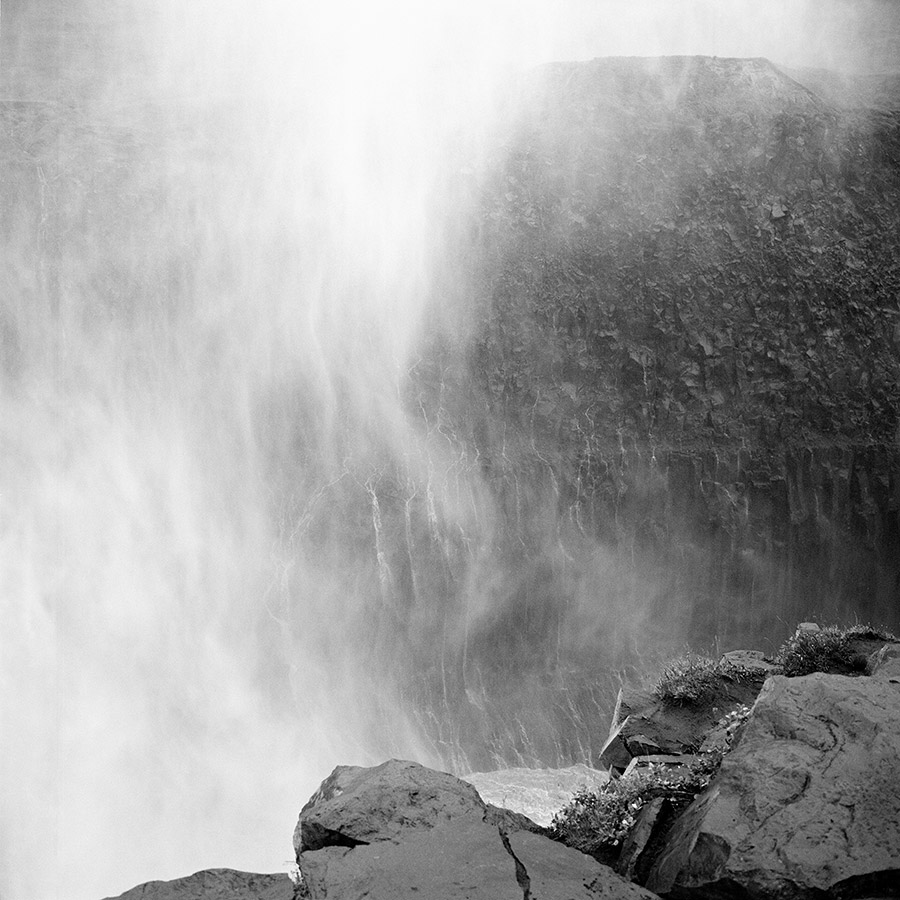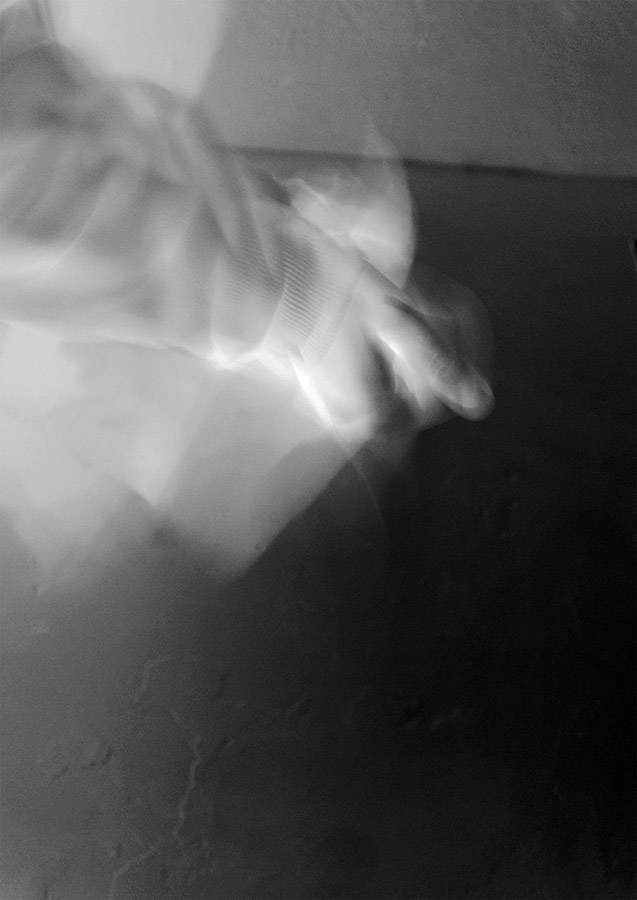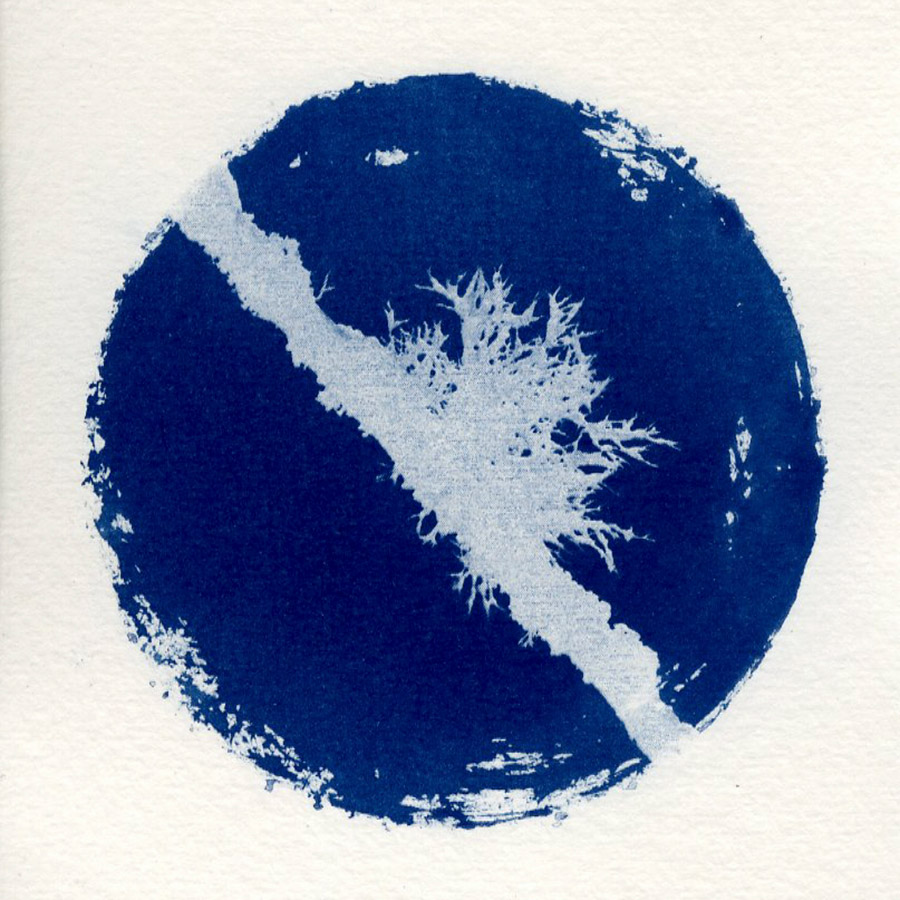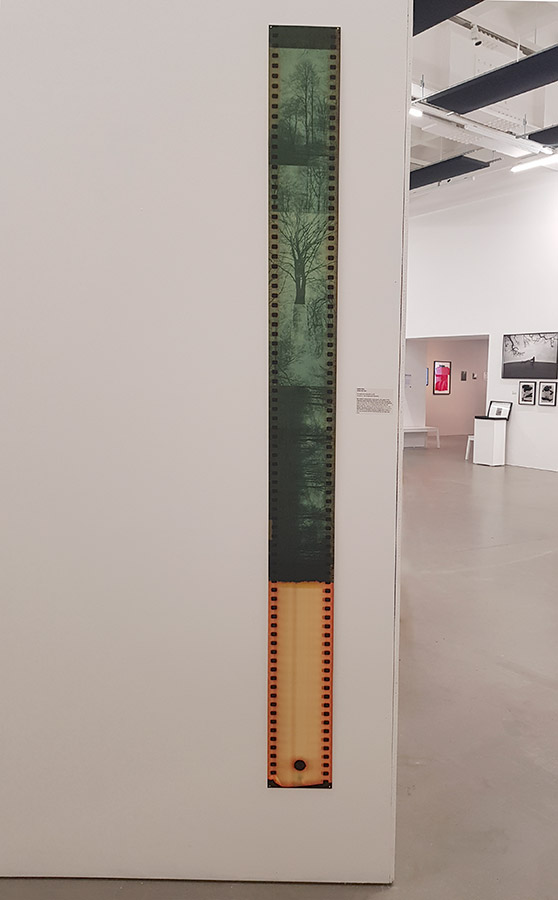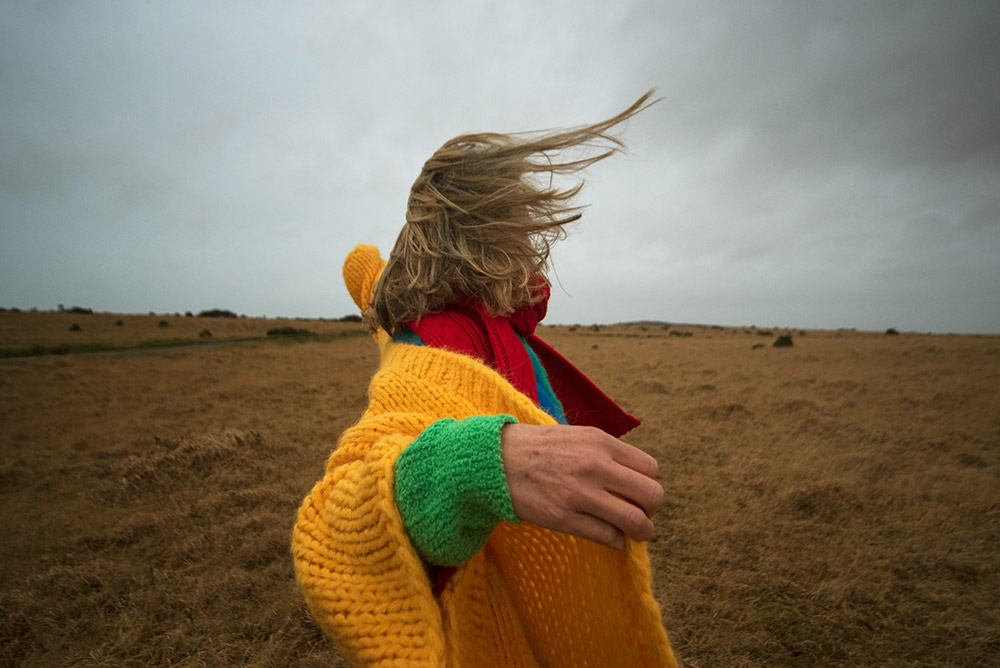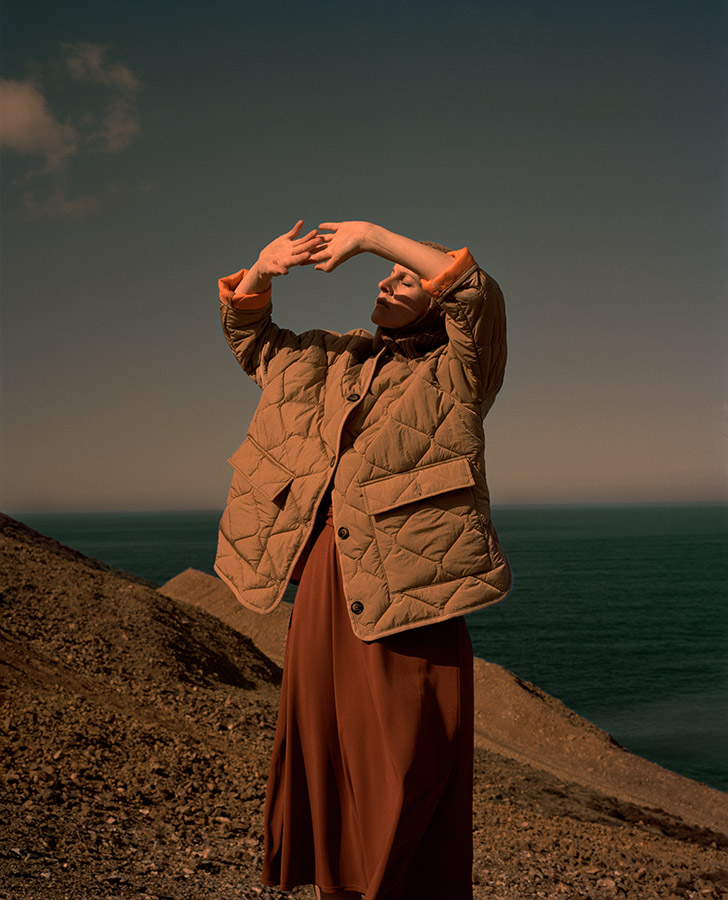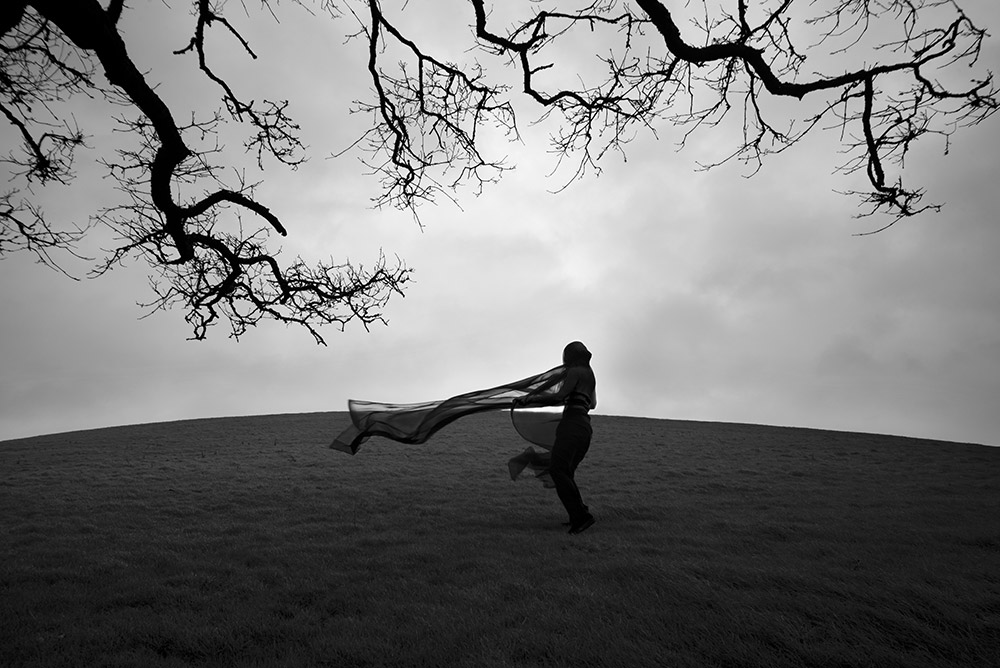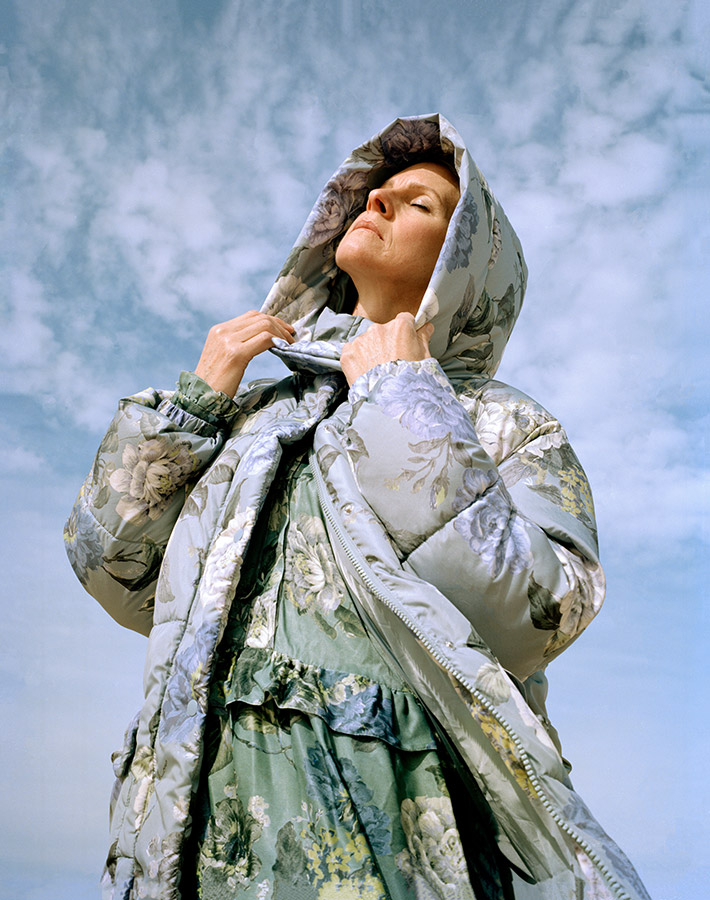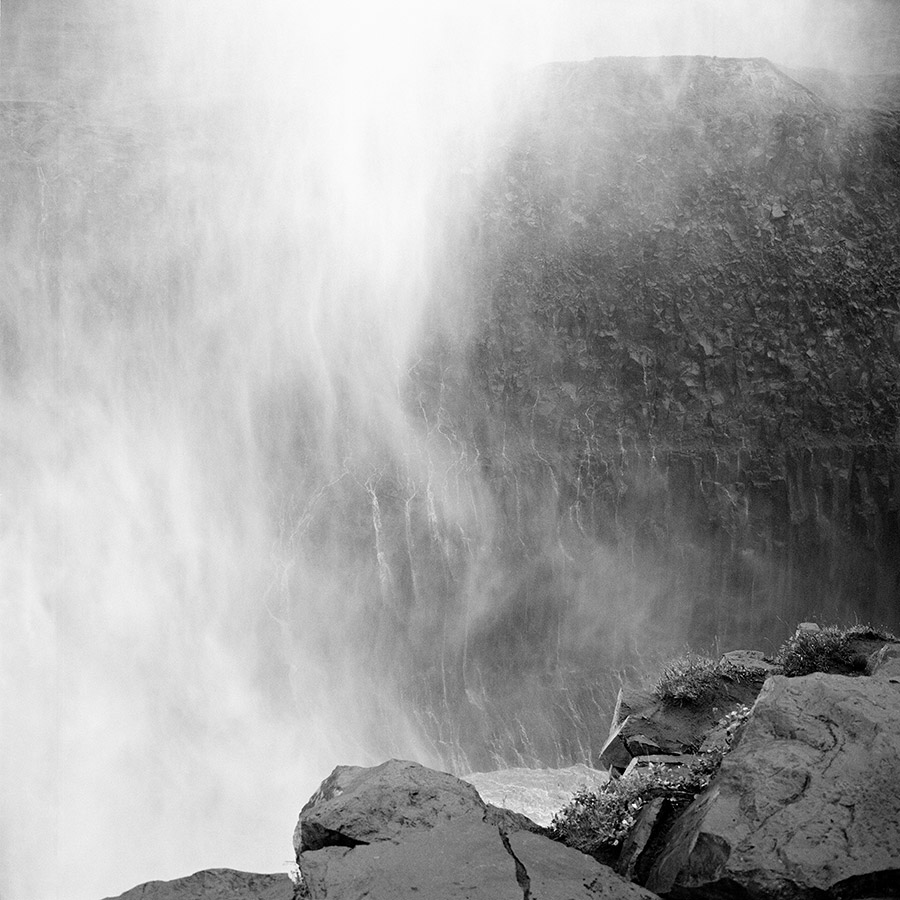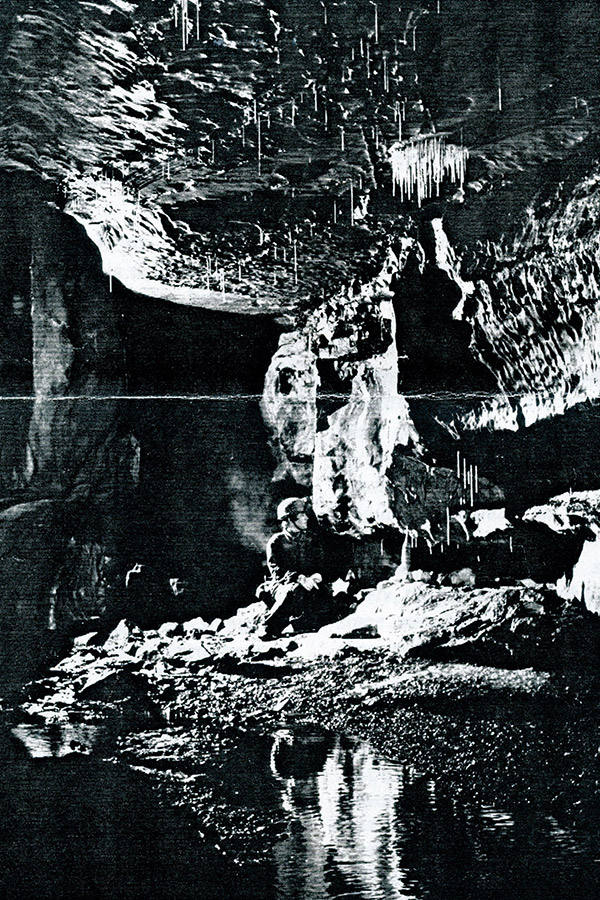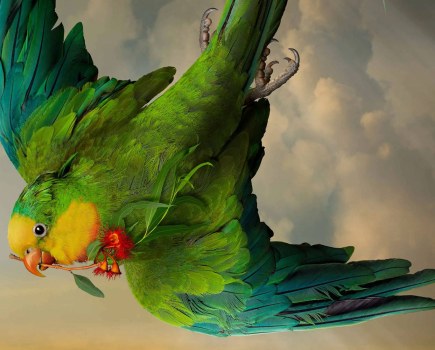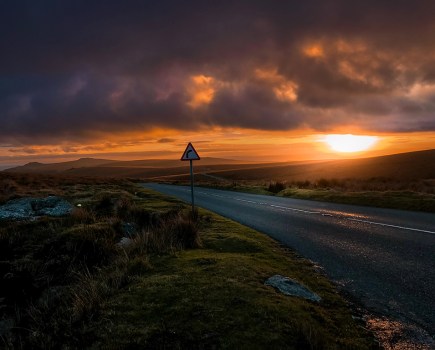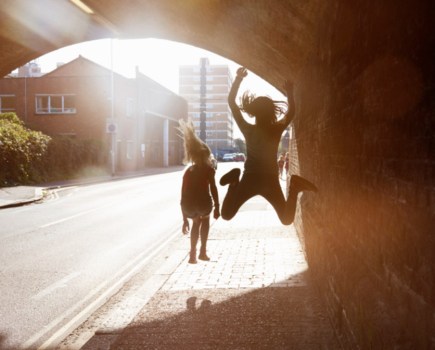Jessica Miller visits Vessel, the Summer show by BA (Hons) Photography graduates from University of West England University Bristol (UWE). Below, the students share more about their projects and advice for those looking to get into photography.
This year for the first time since the start of the Covid-19 pandemic, University of West England’s (UWE) creative degree students have had the chance to share their final year work in physical shows. The Vessel exhibition by recent alumni and graduating BA (Hons) Photography students started off at Arnolfini Gallery in Bristol before heading to London for Free Range.
For two weekends in June and July Free Range student shows take over warehouse spaces in the Truman Brewery on Brick Lane, London – with this year being dedicated to mainly photography. UWE joined the likes of Birmingham City University and Falmouth University on the first weekend of Free Range.
I spoke with some of the UWE photography students about their work, inspirations and future plans as they conclude their studies:
Anna Cunningham – This isn’t for you it is for them
Canon 1200D with an 18-55mm lens. I used a tripod and a self-timer for the self-portraits.
Can you tell us more about your project?
My project, This isn’t for you, it is for them is a personal exploration of my feelings towards not fitting in, not being accepted, and not conforming. Through my work, I express my feelings of frustration, towards those who refuse to understand me, borne out of my personal experience.
The project explores my own feelings of isolation and ostracization, which I experienced growing up, due to my lack of conformity to gender norms and stereotypes. Part of the project acts as a conversation between myself now and the younger me; reflecting on these feelings from an adult perspective. While the project remains acutely personal to me, I hope it offers comfort and reassurance to anyone who shares my experience.
When creating this work, I had in mind two groups of people which helped me better understand my intentions behind this project. The first being those who were negative towards me while refusing to understand me.
The other being anyone with a shared experience. Treating these opposing groups as my intended audience helped in my image making process and further added to the duality of my images. My intention is that these elements are not clearly defined but instead come together to reflect a nuanced understanding of my experiences.
This isn’t for you it is for them is an ongoing project.
How did you select the photographs for your show?
When selecting which photographs to include in the exhibition it was important to me that I showed new work I had created since graduating. Having graduated in 2020 I did not get to exhibit work at the time, due to covid. The work I showed as part of Free Range 2022 is a continuation of my final year project at university under the same title, This isn’t for you, it is for them.
I included a self-portrait along with other photos where I am also visible to make myself more present in this project than I had previously been. These images empathise that my own personal experience is the inspiration behind this project. Including these self-portraits puts me at the centre of this work.
The images I chose best reflect the duality of my feelings of frustration borne out of my experiences of ostracization while also offering elements of reflection, comfort, and reassurance, to both myself and anyone with a shared experience of feeling misunderstood because of their perceived differences. Overall, I chose images which I felt best reflected my personal feelings. These images, in particular, resonated with me (more than those I had previously created).
What are your future plans?
I am planning to start a master’s in photography in September 2023, where I will continue to develop this project. In the meantime, I am keen to explore how my interests of photography and working with young people fit together. My goal is to set up media workshops with Freestyle Bristol, with some of the young people I work with.
Do you have any advice for others wanting to get into or study photography?
- If you are interested in photography, my best advice is just to start. Take photos of whatever you want without worrying too much about why.
- Use whatever you have, whether that’s your phone or an old film camera that’s been buried away in your loft. You don’t need the latest or most expensive camera or lens, you simply need the enthusiasm and drive to want to create images.
- Don’t worry too much about making mistakes, the ‘mistakes’ are necessary and part of the process; there aren’t any rules to creating images. You don’t always need to know why you’re creating the work you are, often the meaning will come later.
Is there anything else you would like to tell us about yourself or your work?
I currently work as a youth and playworker in various Adventure Playgrounds around Bristol while also working as the photographer for Freestyle Bristol, a digital platform for young creatives; photographing various events across Bristol and collaborating with other members of the local creative community.
Louise Gray – Heavy the Tree
Can you tell me about yourself?
Photography has been my creative outlet for many years. It’s been fantastic to at last study photography full time.
At the outset of the degree I anticipated concentrating on architecture or portraiture, but my focus turned to studio still life with a theme of vanitas, and ultimately the direction for my last project has been different yet again. I have embraced the opportunity to try so many different things.
During my time at university, I’ve used a lot of different cameras such as Toyo large format, Hassleblad medium format, Fuji GFX and Nikon 35mm and DSLRs. I now mostly use a Nikon DSLR with various lenses.
Can you tell us more about your project?
My mother’s handwritten recipe book, dating back to 1976, is the origin of this project. I explored memories of her life through the pages of the book; the location where her ashes are scattered and the village and surrounding woods where once she lived. Grief, loss, memory and things left behind inform this project
The two outcomes for this project are very different. Alternative processes are something I’ve become very interested in. The cyanotype processes, invented by John Herschel in 1842, is a very early form of photographic printing. The resulting blue images evoke memories of my mother’s blue painted kitchen cupboards, front door and house shutters, her crockery and the bluebells in the woods where we once walked together.
In contrast to the cyanotype images, I broke with convention and shot film in an intuitive way resulting in blended continuous images which relates to the way memories become intertwined and can fade over time.
How did you select the photographs for your show?
The selection of images for the exhibitions needed to reflect the breadth of the work I’d made for this project.
A key image I chose to use was the tree cyanotype, this is A0 in size. It is an image of the tree where my mother’s ashes are scattered and was the grounding element for this project. Alongside it, in contrast, I exhibited a grid of 16 very small circular cyanotypes. These relate to various aspects of the project, including intimate, often abstract, details of locations and extracts from the recipe book.
The second element is the film image which measures 298cm x 18cm. It is a small section from a 35mm film that contains one continuous image. While it is part of the same project, due to the contrast in colour between this and the cyanotypes I felt the outcomes should be displayed separately.
What are your future plans?
I’m particularly interested in socially engaged practice working with charities and giving something back to the community.
As part of the Career Strategies module a group of students worked with Bristol Museums at M-Shed to design, plan and run a workshop for schools based around the Wildlife Photographer of the Year exhibition. It was great fun to work collaboratively to inspire primary school children and give them the opportunity to use professional photography equipment. This experience in turn is inspiring me to run workshops in the future.
Having developed a keen interest in alternative processes, I am volunteering at workshops run by The Real Photography Company, a charity based in Bristol at community darkrooms in St Pauls. It is great fun to share processes with a wide range of people.
Independently I am also in the early stages of working with a charity for homeless people in Wiltshire with the intention of providing workshops for their guests at the drop-in centre.
Do you have any advice or top tips for others wanting to get into or study photography?
- Research course content and select one that suits your interests and needs; university courses sometimes have a leaning towards a particular genre of photography such as documentary or fashion. I purposefully selected the University of the West of England (UWE) due to their broad approach to photography. I’ve had the opportunity to try many different types of photography and only recently focused on alternative processes.
- Accept mistakes happen and things may not always go to plan; sometimes this can lead to something wonderful!
- Some people simply may not like your work, but equally others will love it – those are your kind of people. There’s no right or wrong, trust your instinct.
Is there anything else you would like to tell us about yourself or your work?
As part of World Book Night 2022 I answered a participatory call for images in response to the theme of Ghosts in the Machine. Artists across the globe submitted work and the collective images are currently being exhibited in the university’s library at Bower Ashton and also in Hong Kong at the Hong Kong Design Institute in the Department of Communication Design.
Megan Hart – Dyad
A mixture of medium format (Mamiya 7ii) and Digital (Nikon D750)
Can you tell me about yourself?
I’m 21-years-old and have always been drawn to creativity in all disciplines. I have a passion for intense, vibrant colours and creating dreamlike fashion imagery through the combination of perfect lighting and well-dressed subjects. Taken mainly outdoors, my photographs are characterised by strong and scenographic ideas and locations, both in urban and natural landscapes. I always feel I have an obligation to understand the subject’s I am photographing, whether I am creating an honest portrait or depicting a mysterious and undeniably stylish character.
Can you tell me about your project?
My most recent project Dyad is a collaborative body of work that follows the maternal bond my mother and I share through being highly creative individuals. Adopting her as my muse, we explore that intimate connection artistically, responding to her creative process as a fine-artist using photography. By taking a more solitary approach, we have stripped away the high production values behind the fashion image and allowed our artistic strengths to come together and hone something meaningful.
For this project I located relevant professional, creative and critical contexts within the fashion realm while also broadening my research in a more artful sense, identifying contextual research around my mum’s artistic inspiration, while also looking into a larger sphere of art movements. This allowed me to further my knowledge of photography’s relationship with abstract art.
I explored artists from the experiments of Man Ray, to contemporary work by Robert Lango, and readings by Adam Geczy and Lucy Soutter. I then began responding to my mum’s art archive as a starting point from which I then styled an outfit/shoot. These garments inspired the whole shoot aesthetic.
With my research and collaboration with a fine-artist, especially someone so close to me, it felt very refreshing. I feel my mind elevated on a discourse that held the purest form of creative expression, to allow my photographic practice to thrive with no limits.
How did you select the photographs for your show?
It wasn’t easy to decide and it took a lot of reviewing to finally come to a decision but I always knew deep down which photographs I wanted to include in the final cut. Fundamentally, when choosing the final images to display it was about making sure I captured the theatricality of my mother through the dominant themes of: self-expression, playfulness and the idea of performance.
I wanted the images to best represent my style whilst also showcasing my mother in a light which was deemed empowering yet vulnerable at the same time. She is a woman I admire profoundly and someone I look up to as a creative person, and I wanted the images to symbolise these attributes not only to me but towards a wider audience.
This was a very personal project which really allowed me to slow down my photographic process and mediate the ‘what’ and ‘why’ I wanted to capture certain things. I ultimately choose the photographs which would hopefully make people see and feel something.
What are your future plans?
I’ve thought about staying in education and doing an MA specialising in fashion photography. But at this current time I have no immediate plans for the future and I am certain I need time to travel once graduating to allow me to reflect on what is important in my life. I know I’m a very determined person and I will always find a way to make things work, so I have no doubt that I’ll keep pushing my creative practice after university to see where I can gain more insight into any photographic opportunities.
Do you have any advice or top tips for others wanting to get into or study photography?
- Throughout my uni experience I really struggled with finding confidence in myself and my photography. My weakest point would be that I constantly compared myself to others and this side-tracked me majorly, thinking that I should be producing work that people wanted to see or what had already been done before.
- Eventually when getting into the flow of a project and finding my feet this is where I started to believe in myself and what I was making. I was then able to really enjoy my photographic process, visualise where I was going and allow myself to feel good about the images I was producing. So my best advice would be to ride the creative wave!
- Not everything you produce needs to be of a high standard or good enough for Vogue! Things go wrong, experiment and have trust in your creative genius.
Zach Knott – Singing River Mine
• Rolleiflex 2.8f, fixed 80mm f2.8 Planar lens
• Mamiya RZ67, 110mm Sekor Z 110mm 2.8f and Sekor 50mm 4.5f lens
• Film stock: 120 Ilford HP5+
• Canon 5D mii, 18-135mm and 50mm f1.2 lens
Can you tell me about yourself and your photography?
I am a Bristol based documentary, portraiture and fine art photographer who creates works in response to personal experiences and curiosities. Keeping my visual approach broad and unique to each project, I often utilise a combination of observed landscapes and constructed fine art portraiture to communicate his intended narratives.
The outcome of my work is heavily influenced by the subject or theme being documented, resolving in work that resonates with myself and the subject matter.
Can you tell me more about your project?
Singing River Mine is a coming of age work illustrating the journey taken on the exploration for independence and life’s aspirations. Set in an art narrative context and resolved in the form of an artist-made photobook.
My work explores the path taken to strive towards our purpose and gain our own place in the world. The unknown can be daunting, preparation and planning can help with achieving your goals but there are often unexpected obstacles and challenges that you must rely on intuition or a leap of faith to overcome.
I started this project when I discovered my father often went caving when he was studying at the University of Bristol, after delving through archive material and family photo albums. He was a member of the B.S.S.C (University of Bristol Spelæological (caving) Society) in the 80s.
The B.S.S.C is a historic club which was founded in 1919 that have organised caving expeditions for over 100 years, internationally but mainly locally in the Mendips and Cheddar Gorge. This particularly resonated with me as I became an incessant climber not long after starting my Photography degree at UWE.
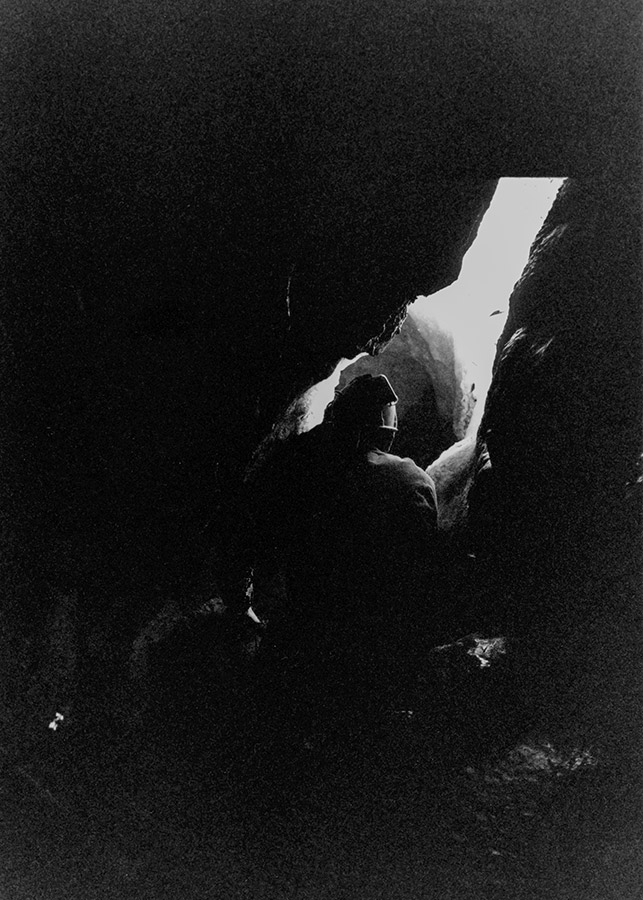
Image: Zach Knott, family archive
The fact that both my father and I had experienced the same geological landscapes several decades apart fascinated me and so began the inspiration for this work.
Caving became a metaphor throughout the work to illustrate the experience of coming of age. An individual’s conquest against an uncaring and unforgiving environment, armed with nothing but their intuition, collated experience and perseverance against the unknown.
This connection to geology did not start with my father however, my Grandad was an avid amateur geologist and collected boxes of geological samples and fossils, which I ended up inheriting years later.
A tradition that was preserved, with my childhood involving biweekly fossils hunting trips to local Bristol locations. The concept that passions and interests which shape the way we live our lives and interact with our environments can be inherited just as inanimate objects can was a breakthrough and something that was explored throughout this project.
This project includes archive imagery from family photo albums of my father at my age along with recent images of him now. Throughout the book there is a diptych motif between my father and I, drawing parallels between our lives which speaks to how coming of age transcends generations as well as the influence family has on the course of their descendents’ lives.
Archive material from B.S.S.C was also included in the final book, spanning the origins of some of the images in the work back to the later 1960’s. These are the images in the book that consist of dots, created using a risograph printer that was popular during this time.
How did you select the images for your show?
I exhibited four 24×24” framed prints as the centrepiece of my installation, accompanied by three A3 framed prints and the framed A5 poem I had commissioned by poet Johnny Heath.
The main and most resolute outcome of the project was the A3 52 page photobook I produced, sequencing the varying images of the project accompanied by excerpts from the poem. I therefore needed to select images that were bold and left the audience with questions about the work that could be answered by the book.
A pivotal image of the project is the square format photograph of a figure jumping into the depths of a waterfall in Scotland (above). This striking image has kindled the most conversations by far from two shows I was a part of previously. This was the starting point for the selection of my four main images.
With the project being largely shot across Iceland and Scotland it felt right to have two from each. The second image from Scotland is looking out from the mouth of a sea cave, the image’s composition fades in lighter from the dark edges making for an engaging photo that once observed hints at the title of the work, Singing River Mine.
Building on the title reference, I selected a shot of a meandering river trailing off from Dettifoss waterfall, the most powerful waterfall in Europe. This was a call back to one of the early sources of inspiration for the project, an individual’s path through life and the route we take to independence. This was coupled with a more abstract shot of mist from the waterfall at the source of the river, an image that entices the viewer to extrapolate its context through careful study.
To support these images and add further context, I framed an archive photograph of my father caving in the Mendips. This was accompanied by a still life image I took this year of the caving suit my father was wearing in the archive image, a reference to the visual and metaphorical diptych explored throughout the book. A reworked risograph print from the front cover of UBSS was also exhibited alongside the poem commissioned by the talented street poet Johnny Heath, with one of my favourite excerpts from the poem “I am the breath in the cave” perfectly depicting the lone figure and their reflected breath in the still water of the cave.
With the origins of the project coming from a personal place I found that I was getting attached to images that had a strong personal and nostalgic connection, which may not have been as effective in communicating my intended narrative as other images.
What are your future plans?
First off, my plans for the future involve taking a breather. Not necessarily from creating images but from the structure I have found myself in. I always wished I took a break between my art foundation course at college and university.
With this in mind I plan to spend the next six to twelve months travelling, working somewhere I enjoy and developing my career as a freelance photographer. I aim to factor in a reasonable chunk of my time into the development of personal photographic projects without the pressure of external deadlines. I’m excited to see how this influences the outcome and direction of my future work.
Do you have any advice for others wanting to get into or study photography?
- Get obsessed. Be that with the technical aspect of photography, other photographer’s work such as photo books, a subject matter that you explore and research, or simply with making images that you care about.
- For anyone looking to develop their work either visually or contextually; I can not stress enough how beneficial the opinions of other artists has been to my own practice. You do not always have to agree but understanding how your work is perceived is invaluable and will make you critically consider future compositions.
BA (Hons) Photography at University of West England, Bristol
Find out more about studying the BA(Hons) Photography course at UWE Bristol
See more UWE student work here: Vessel
Free Range shows
Free Range is a special project that started by the Truman Brewery in 2000, alongside Fashion East, the talent incubator for emerging designers. The project was started initially to give students from outside London, in areas where the creative community may not have been as strong, the opportunity for their work to be seen by the creative industry that was building in Shoreditch and to meet peers from across the UK.
Related reading:
University of Gloucestershire students share new perspectives at photojournalism show
Falmouth students share diverse techniques in Gweles exhibition
Middleman: the degree show by University of Portsmouth

